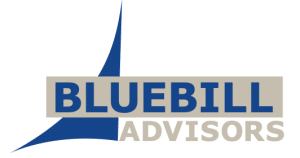Oracle announced that it has entered into an agreement to acquire Endeca Technologies, Inc., a provider of unstructured data management, web commerce and business intelligence solutions. A privately-held company based in Cambridge, Massachusetts, Endeca provides products that help companies analyze unstructured data, gain better business intelligence, and deliver a better customer experience. Endeca’s core technology, the MDEX Engine, is designed to enable enterprises to correlate and analyze unstructured data. Endeca InFront is a leading customer experience management platform that enables businesses to deliver targeted and relevant customer experiences online with merchandising and content targeting tools for web commerce. Endeca Latitude is a technology platform that enables businesses to rapidly develop analytic applications bringing information from many unstructured and structured information sources together. The combination of Oracle and Endeca is expected to create a comprehensive technology platform to process, store, manage, search and analyze structured and unstructured information together. The combination of Oracle ATG Commerce and Endeca InFront is expected to enhance cross-channel commerce, merchandising, and online customer experiences. The combination of Oracle Business Intelligence and Endeca Latitude is expected to provide a comprehensive business intelligence foundation and analytic applications, bringing together information from structured and unstructured data sources. The transaction is subject to customary closing conditions and is expected to close before the end of 2011. Until the deal closes, each company will continue to operate independently. http://www.oracle.com/ http://www.endeca.com
Category: Marketing & e-commerce (Page 40 of 78)
IBM has announced a cloud-based Web analytics and digital marketing suite aimed at helping its business customers automate online marketing campaigns across digital channels, such as Websites, social media networks and mobile phones. The new IBM offering combines software from the acquisitions of Coremetrics and Unica and provides analytics that help companies fine-tune marketing campaigns and create personalised offers in real-time across online channels. For example, businesses would be able to evaluate Facebook or Twitter activity, and offer tailored promotions delivered to their mobile devices on the fly. IBM’s suite also enables businesses to deliver and fine-tune digital marketing programmes based on what customers are doing offline. For instance, a consumer who purchased a new tablet in a brick-and-mortar store would receive special offers via email to purchase tablet accessories. http://www.ibm.com
Adobe Systems Incorporated announced Adobe Tag Manager for the Adobe Online Marketing Suite, powered by Omniture. This new solution provides a tag management framework for the entire Adobe Online Marketing Suite as well as for other digital marketing technologies. Capturing anonymous audience data is typically done using a tag (a small piece of JavaScript or HTML image call) placed in a piece of content or on a Web page. Various applications for capturing and taking action on analytics data usually require their own tags. The process of implementing and maintaining separate tags on a Web page and across partners such as analytics providers, site and content optimization vendors, ad servers, ad networks, affiliate networks and audience measurement firms often requires significant technical skills to implement or change and can become costly, time consuming and error prone. Adobe Tag Manager solves these industry problems with a tag management framework that serves as a tag container, housing the tags that an Adobe customer may require, including all Online Marketing Suite tags and third-party tags. While some customers may deploy a new standalone tag container, Adobe SiteCatalyst customers can deploy the tag container without having to change their existing SiteCatalyst page tag. The tags within the container are managed through an administrative user interface where the customer can insert or remove tags (from Adobe or other partners) without making changes to a website. http://www.adobe.com/
One of the conclusions of our report Smart Content in the Enterprise (forthcoming next week) is how a little bit of enrichment goes a long way. It’s important to build on your XML infrastructure, enrich your content a little bit (to the extent that your business environment is able to support), and expect to iterate over time.
Consider what happened at Citrix, reported in our case study Optimizing the Customer Experience at Citrix: Restructuring Documentation and Training for Web Delivery. The company had adopted DITA for structured publishing several years ago. Yet just repurposing the content in product manuals for print and electronic distribution, and publishing the same information as HTML and PDF documents, did not change the customer experience.
A few years ago, Citrix information specialists had a key insight: customers expected to find support information by googling the web. To be sure, there was a lot of content about various Citrix products out in cyberspace, but very little of it came directly from Citrix. Consequently the most popular solutions available via web-wide searching were not always reliable, and the detailed information from Citrix (buried in their own manuals) was rarely found.
What did Citrix do? Despite limited resources, the documentation group began to add search metadata to the product manuals. With DITA, there was already a predefined structure for topics, used to define sections, chapters, and manuals. Authors and editors could simply include additional tagged metadata that identified and classified the contents – and thus expose the information to Google and other web-wide search engines.
Nor was there a lot of time or many resources for up-front design and detailed analysis. To paraphrase a perceptive information architect we interviewed, “Getting started was a lot like throwing the stuff against a wall to see what sticks.” At first tags simply summarized existing chapter and section headings. Significantly, this was a good enough place to start.
Specifically, once Citrix was able to join the online conversation with its customers, it was also able to begin tracking popular search terms. Then over time and with successive product releases, the documentation group was able to add additional tagged metadata and provide ever more focused (and granular) content components.
What does this mean for developing smart content and leveraging the benefits of XML tagging? Certainly the more precise your content enrichment, the more findable your information is going to be. When considering the business benefits of search engine optimization, the quality of your tagging can always improve over time. But as a simple value proposition, getting started is the critical first step.
WebCollage, Inc. a developer in online content publishing, announced the release of the interactive tour builder within the WebCollage content publishing application, Content Publisher. The interactive tour builder allows one to design, build and publish interactive product demos with existing assets directly onto their retail partner’s product pages. Manufacturers can build then syndicate product demonstrations across their retail channel. Content Publisher’s new interactive tour feature is designed for marketing personnel to create interactive tours using existing assets staying within the Content Publisher application. The Content Publisher platform lets end users design and then syndicate the entire interactive tour, complete with tabs, buttons and call outs directly to their retail partner’s websites. Content Publisher is designed with an intuitive user interface that integrates with WebCollage’s patented syndication platform. The SaaS solution gives end users control of what and when to syndicate, to which retailer and how many and when to update. http://www.webcollage.com/
Alterian, the customer engagement solutions company, has acquired Intrepid, an international social media analytics and market research firm. The acquired company is a consulting business that helps its clients to derive actionable business intelligence from social media data. Intrepid has 40 employees, with offices in Seattle and London as well as a growing social media analytics team in Ho Chi Minh City, Vietnam. The Intreprid acquisition should bolster Alterian’s array of Social Media marketing solutions. It also provides, through the Ho Chi Minh team, a rich pool of language skills to help enhance Alterian’s offerings in the Asia Pacific region.http://www.alterian.com/
At the industry analyst session at Gilbane Boston last December, one of the points of discussion was how well spending on web content management systems had held up during the depths of the recession compared to other parts of IT budgets. Everyone on the panel agreed, and Forrester and IDC both mentioned research showing a healthy market for WCM and expected growth (if someone remembers the numbers please comment). This was a surprise to much of the audience, but obviously not to the vendors (well, at least to those reaping the benefit).
Why has/is web content management growing? The one word answer is ‘marketing’ – not vendor marketing, although they are mostly in tune with, and encouraging, the more aggressive pro-activeness of enterprise marketers. And why are marketing executives now better at demanding, and getting, budgets for WCM? There are a number of reasons, including the paradoxical “to save money” (system costs have come down, large system service contracts costs have not, and SaaS solutions and open source solutions are growing). Most importantly however, is that most organizations have finally figured out that ‘marketing’ means ‘multi-channel, digital, and interactive/social marketing’. This is fundamental. The companies who took advantage of the recession to invest in learning what this means, experimenting with tools, customer interactions, and system integrations, have gotten a bit of a head start, but nobody can ignore this – this is not a ‘nice to have’.
Why is the focus on ‘web content management’ and not something else? All product categories are fluid, and eventually there will be a category, buzzword/phrase TBD, for multi-channel content management that includes tools for social, mobile, tablet, channels etc. But for the foreseeable future, the corporate website(s) will be the hub, however it is accessed.
Well, all I really meant to do in this post was point to the special guide to marketing-focused sessions at Gilbane San Francisco in May, but now you know why. These sessions will also be useful for those in IT (along with our technology track) who support marketing initiatives.
SDL plc has consolidated branding in order to be recognized globaly under a single brand. Through a series of acquisitions and research and development investment, SDL has expanded its technology footprint from Language Technology into Structured Content Technologies, Web Content Management and most recently eCommerce Technologies. To better convey SDL’s end-to-end content platform, the company is relaunching as a new consolidated brand. As of now, all business units in SDL, including SDL Tridion, SDL XySoft and SDL TRADOS Technologies, SDL Enterprise Technologies and SDL Language Services, will be referred to as divisions of SDL. The different business units of SDL will become one of five specialized divisions‚ Structured Content Technologies; Web Content Management Solutions; eCommerce Technologies; Language Technologies; and Language Services. http://www.sdl.com/

